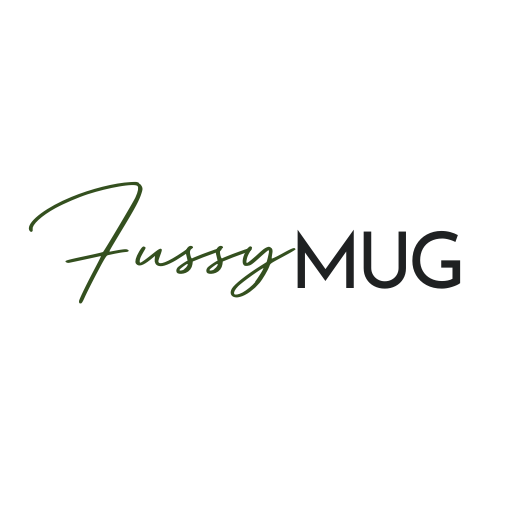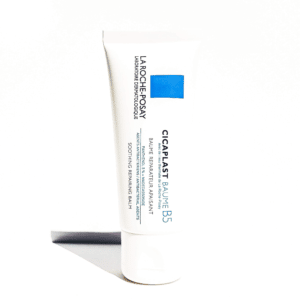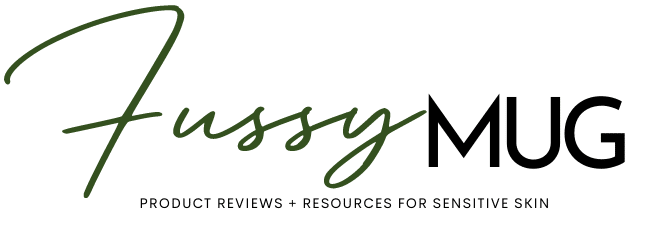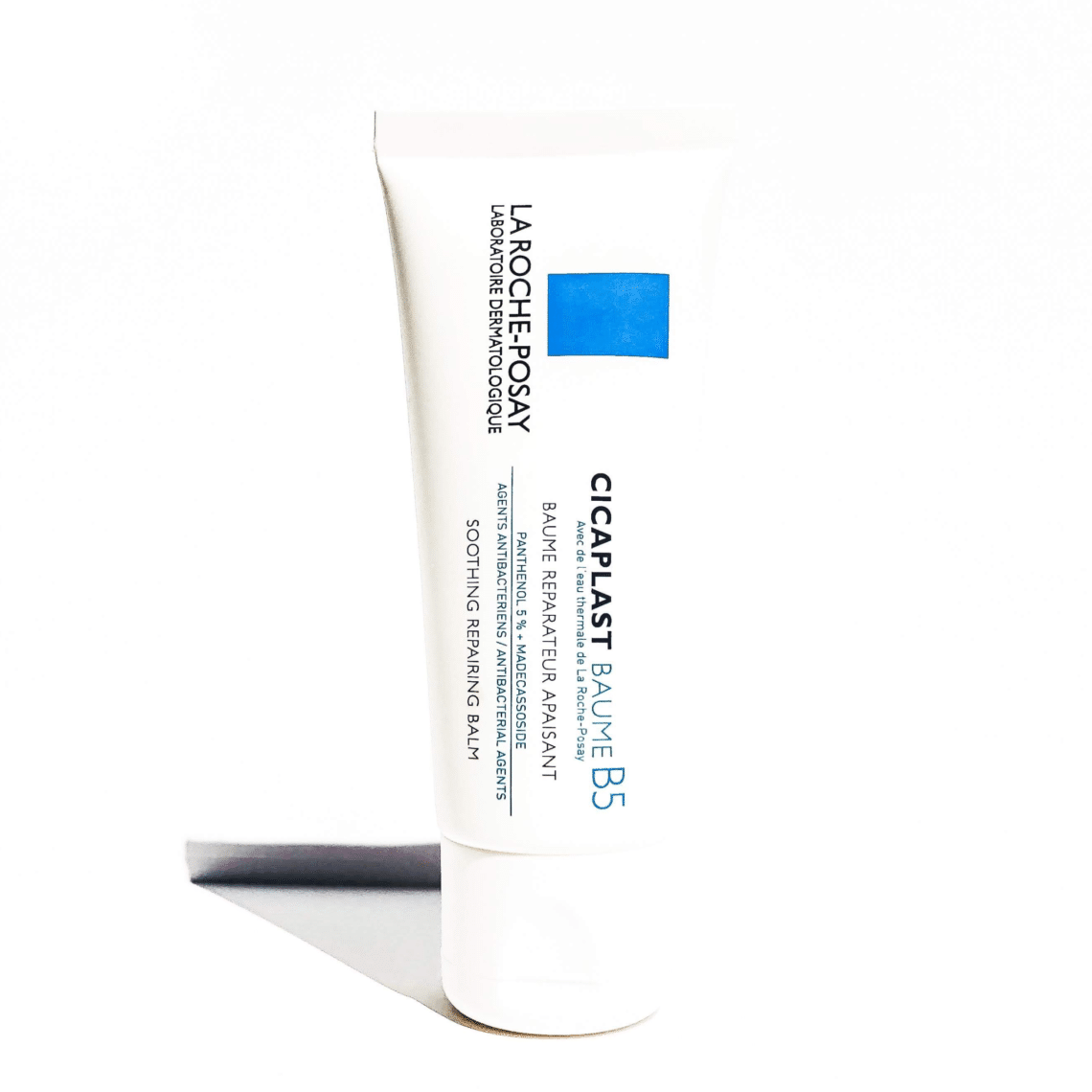La Roche Posay Cicaplast Review
Does this cult favorite really heal dry, irritated skin? Check out my La Roche Posay Cicaplast review to find out.
If you’re in a hurry, the answer is no. But you should still buy it. Read on to find out why.
When you make a purchase through one of the links included in this article, I may earn a small commission. Learn more here›
Product Profile
La Roche-Posay, is a French pharmacy brand that’s been around for over four decades. It’s known for developing formulas with thermal spring water that comes from the city of its namesake. They have an extensive range of face and body products and they market themselves as being dedicated to developing skincare for those with sensitive and reactive skin.
When I first came across La Roche-Posay, I was convinced that I was going to find least one product I could use. After all, the brand is supposed to be for sensitive skin! However, historically La Roche-Posay products have not worked for me. I have tried their Toleraine Fluid, Toleraine Riche, Toleraine Ultra, Lipikar AP Balm and their Effaclar Mat, (I’ve also tried several of their sunscreens but that’s another post) and my skin did not like any of them. However, since I can never help myself. I had to try the Cicaplast Balm B5 as it seemed very promising. So I was optimistic about this one.
La Roche Posay Cicaplast Review – Product Claims
According to La Roche-Posay’s product page, the La Roche-Posay Cicaplast Balm “helps relieve and protect cracked, chapped, chafed skin; soothes visible signs of dry skin irritations and sensitive skin; provides daily relief for dry to very dry skin; protects from the drying effects of wind and cold; helps treat and prevent diaper rash; provides skin comfort and hydration feels restored, and is suitable for patients undergoing chemotherapy and radiation.”
The balm sounded like it was exactly what I needed. My intention was to use this as a moisturizing mask treatment on days my skin needed a little extra moisture and protection. so, I was excited to experience all of the moisturizing benefits. I had read several reviews about how deeply moisturizing it was and how it was a sensitive skin “savior”, so I was all in.
Also, I have always wanted to try a cica cream. But had not been able to find a cica product that was sensitive skin friendly. And while not a traditional cica cream in that it does not contain Centella Asiatica, it does have the ingredient madecassoside which is the bio active compound that gives Centella Asiatica its superpower. Madecassoside is also said to have antioxidant properties, wound healing benefits and promotes hydration. So needless to say, I was eager to try it.
My Experience
I want to preface this, by saying I broke all my own rules when trying this product for the first time. I purchased the balm and put it on my entire face that night. Folks, don’t be like me. Patch test, and save your skin barrier!
Results – Day 1
Since I was using this as a moisturizing mask. I used the balm for the first time as a last step after applying all of my normal evening skincare .
I woke up the next morning and my face felt tight. No real issues, just tight. I used a dime size amount, so I thought, maybe I put too much on. After all, I was using it as a mask. So that evening, I decided to put a pea size amount and see what happens.
Results – Day 2
My face went from feeling tight, to feeling really dry. Which was weird, because it’s supposed to be moisturizing. I was confused, and assumed I was doing something wrong. I decided to skip a day of using the balm, to give my skin a break. Instead of the balm I applied a sheet mask just to make sure my skin wasn’t doing something funky and decided I would try the balm again the following day.
Results – Day 3
Instead of putting it on in the evening, I put the balm on in the morning and by that afternoon my face began to itch like crazy. And, when I say itch, I mean, ITCH. Like I rubbed my face with poison ivy, itch. So, I discontinued using the balm and went into recovery mode. Since I only try one new product at a time, I knew it was definitely the balm. The question was, what in it was making me itch. I couldn’t figure it out at first. But then it dawned on me, that I had stopped using zinc oxide based sunscreen because it caused inflammation.
Thinking I only had to avoid zinc oxide I happily bought this product knowing that it had zinc gluconate. However, I quickly realized that not only is this product not going to work for me. But, that I most likely will need to avoid all forms of zinc. Since it makes my skin feel exactly the way benzoyl peroxide makes my skin feel which is hot, itchy and extremely uncomfortable. So needless to say I was bummed, because I really wanted to love it.
Side Note: My allergist at the time said that it was the type of zinc, zinc oxide that was the problem. She wanted me to avoid using zinc oxide, but said I shouldn’t avoid all zinc. She was WRONG. On day 3 of trying this product which has zinc gluconate, I broke out in hives.
Is It For Dry Skin?
Hives aside, as I was writing this La Roche Posay Cicaplast review. I was genuinely confused by claims of this balm being moisturizing. Let’s ignore the fact that the zinc in this product caused an issue for me. And focus on the idea that this is supposed to be a moisturizing balm. This is baffling to me since this balm was giving Death Valley, dehydrated!
Zinc is an astringent, so its job is to tighten and soak up oil in the skin. I repeat, SOAK. UP. OIL! Additionally, they’re several cosmetic salts in this formulation. All of which have the ability to draw oil and water out of the skin. Like, what? How are people feeling moisturized after using this? Yes, there is shea butter and panthenol in this formulation. But the drying ingredients out weigh the moisturizing ingredients in this formulation, sooooo. Please, someone make it make sense. I’ll wait.
Interestingly, when I pulled up the La Roche Posay website while writing this article, I noticed that the labeling for the product has changed. When I purchased this balm the label on the tube said “soothing repairing balm” and highlights 5% panthenol and madecassoside. The label now says “dimethicone skin protectant”. Which to me is not a selling point, as dimethicone tends to clog pores and cause acne. But I digress.
La Roche Posay Cicaplast Review For Acne
Even though this product did not work out for me as moisturizer, not all is lost. It works beautifully as a spot treatment for acne! While testing this balm, I had 3 huge cystic acne bumps that wouldn’t go away. The area around the acne was red and irritated and all my go-to spot treatments weren’t working. Once I started testing the balm, I realized that even though my skin was dried to a crisp, the areas where I had acne, were less inflamed and drying up.
Honestly the reduction in my cystic acne over night, makes this worth the buy. Knowing I couldn’t use it anymore, I gave the bottle to my best friend when she had some cystic acne on her chin. She spot treated her face that evening and the next day her cysts were almost completely gone.
But be forewarned, it does not completely eliminate acne. It does however, reduce the size and “hurty-ness” (technical term) of the acne. If you are looking for a product that reduces inflammation and redness, give this a try. It really does work as a gentle acne treatment and is an alternative to benzoyl peroxide.
How I Use It
Since I do not consider this a therapeutic treatment for irritated or sensitive skin. I cannot recommend using it as such.
However, as an acne treatment. Apply it as your last step to acne or problem areas just as you would any spot treatment.


PRODUCT SNAPSHOT
BEST FOR: Oily, acne prone-skin types.
SENSITIVE SKIN FRIENDLY? Questionable. Its formulation is extremely drying, which could aggravate sensitive skin. Also if you break out from products with benzoic or stearic acid, you may want to skip this one.
POTENTIAL TRIGGERS: Hydrogenated Polyisobutene, Dimethicone, Aluminum Starch Octenylsuccinate, Propanediol, Cetyl Pef/PPG-10/1 Dimethicone, Tristearin, Zinc Gluconate, Manganese Gluconate, Magnesium Sulfate, Disodium Edta, Copper Gluconate, Acetylated Glycol Stearate, Polyglyceryl-4 Isostearate, Sodium Benzonate, Chlorhexidine Digluconate, CI 77891/Titanium Dioxide.
FRAGRANCE-FREE: Yes. But it does have a slight chemical smell.
ALLERGENS: Those with aluminum, botanicals, petroleum, corn, palm, rapeseed oil, benzoic or stearic acid, should proceed with caution.
PRICE: $18.99
La Roche Posay Cicaplast Ingredients

Aqua/Water, Hydrogenated Polyisobutene, Dimethicone, Glycerin, Butyrospermum Parkii Butter/Shea Butter, Panthenol, Butylene Glycol, Aluminum Starch Octenylsuccinate, Propanediol, Cetyl Pef/PPG-10/1 Dimethicone, Tristearin, Zinc Gluconate, Madecassoside, Manganese Gluconate, Magnesium Sulfate, Disodium Edta, Copper Gluconate, Acetylated Glycol Stearate, Polyglyceryl-4 Isostearate, Sodium Benzonate, Phenoxyethanol, Chlorhexidine Digluconate, CI 77891/Titanium Dioxide.
Water – Good ol’ plain H2O
Hydrogenated Polyisobutene – A skin-smoothing synthetic oil added to formulations for skin softening and smoothing as well as waterproofing. Can dry out the skin if not layered with other
Dimethicone – A silicone that creates a smooth surface on the skin. Can clog pores and cause congestion.
Glycerin – A sugar alcohol that can be derived from petroleum, corn, palm, rapeseed oil, or animal fats.
Butyrospermum Parkii Butter/Shea Butter – A skin conditioning natural emollient that comes from the nut of the African Shea tree.
Panthenol – A water-binding humectant made from pantothenic acid, also known as pro-vitamin B5.
Butylene Glycol – An organic alcohol, often used as a humectant. Derived from corn, petroleum, or sugarcane.
Aluminum Starch Octenylsuccinate – A synthetic salt made from aluminum starch. Used as an anti-caking agent.
Propanediol– A liquid solvent that acts as an emollient and occlusive. Propanediol can be naturally derived from corn or synthetically derived from petroleum. Those with corn or petroleum allergies should use with caution.
Cetyl Pef/PPG-10/1 Dimethicone – A skin conditioning silicone. Can clog pores and cause congestion.
Tristearin – A skin conditioning oil made from glycerol and stearic acid. Can cause acne and clogged pores.
Zinc Gluconate –A salt mineral, that has antibacterial and anti-inflammatory benefits. It’s also a powerful astringent that can draw water and oil out of the skin.
Madecassoside – The bioactive ingredient in Centella Asiatica. It has antioxidant, anti-inflammatory, and wound-healing properties.
Manganese Gluconate – A gluconic acid salt. Used in skincare products as an oil reducer.
Magnesium Sulfate – A salt used as a bulking agent, viscosity enhancer and oil absorber in skincare products.
Disodium Edta – A salt that’s added to prevent ingredients in a formulation from binding to trace minerals like zinc, copper, or magnesium. Common irritant.
Copper Gluconate – A copper salt with wound healing and skin regenerating benefits. Also draws excess oils out of the skin.
Acetylated Glycol Stearate – A fatty acid made from glycerin and stearic acid. Used as in formulations as a thickener, to improve texture, or as an emollient. Those with palm, corn or soil oil allergies should proceed with caution. Can cause acne and clogged pores.
Polyglyceryl-4 Isostearate – A skin-conditioning emulsifier made from glycerin.
Sodium Benzonate – A preservative made from benzoic acid.
Phenoxyethanol – A preservative made from petroleum. If you are allergic to petroleum or mineral oil, you may have sensitivity to Phenoxyethanol.
Chlorhexidine Digluconate – An antimicrobial.
CI 77891/Titanium Dioxide – A mineral used to thicken or whiten a formulation. Also used as sunscreen.
Smell, Texture + Consistency
- It’s fragrance-free, but not free of fragrance. It has a slight chemical/plastic smell.
- The texture is thick straight out of the bottle. However, rubs in well and leaves a matte finish.
- Although cosmetically elegant , it can leave a white cast, much like a zinc sunscreen. Those with darker complexions may want use it only at night or mix with foundation.
Similar Alternatives
Shea Butter + SVR Sensifine Nutri-Baume
Unfortunately, I have yet to find a cica balm, that is sensitive skin friendly. However, if you have cracked, chapped or chafed skin. Or if you’re trying to protect your skin from the “drying effects of wind and cold” raw shea butter is a fantastic skin protectant.
Shea butter is one of my staple skincare products that I use to heal, protect and nourish my skin. This is the one I use. It lasts forever, it’s only one ingredient and is packed with ceramides.
If raw shea butter isn’t your thing, and you’re looking for a cream with a similar texture to the B5 balm. Another French pharmacy brand comes in clutch. SVR Sensifine Nutri-Baume is my absolute FAVORITE moisturizer. It is not an exact dupe for La Roche Posay Cicaplast Balm B5 (no zinc). But, I personally find it to be better and way more sensitive skin-friendly than the B5 balm. It’s a simple, gentle highly moisturizing, rich balm that is really meant to soothe irritated skin. It’s so good that I use it daily as my evening moisturizer and as a day time moisturizer when my skin is feeling extra dry. I also alternate it with shea butter when I’m slugging.
It works really well on sensitized skin or skin experiencing irritation. And I don’t say that lightly! It’s also great for post-procedural skin. I have been using this product for years and have had to order it through an online French pharmacy, because it wasn’t sold in the U.S. However, I can now buy it in the States which is AHH-mazing! This is where I get mine.
Is It Sensitive Skin Friendly?
- Yes and no. Those with oily, sensitive skin may find that La Roche Posay Cicaplast Balm B5 is great as a moisturizer or makeup primer to control oil.
- If you are sensitive and dry, this product may cause further dryness and dehydration.
- If you’re looking for a gentle spot treatment for occasional acne, this is sensitive skin friendly enough to be an over night treatment. However, using it several days in a row as an acne treatment may cause dryness and peeling, much like other acne medications, so use sparingly.
La Roche Posay Cicaplast Review – Final Thoughts
Who They Say It’s For?
- Dry, irritated, sensitive skin.
Who Is It Really For?
- Those with oily, acne prone-skin that can tolerate zinc, silicones, benzoic and stearic acid.
Who Is It Not For?
- Those with dry, dehydrated or irritated skin that are experiencing active inflammation, irritation, cracked or broken skin.
- Although they claim its safe for those with sensitive skin undergoing chemotherapy and radiation. I would strongly recommend patch testing first. Chemo and radiation therapy tends to thin the skin. All-natural, organic products that are gentle and nourishing are much more ideal. Shea butter, squalane, avocado oil and jojoba oil are all products that are reparative and skin supportive.
- Oddly, La Roche-Posay says not to use this balm on broken skin. Yet they also say it helps relieve cracked skin. Confused? Me too. Overall, the product claims fall short.
What I Like About It
- It works great as a temporary acne spot treatment.
What I Don’t Like About It
- The formulation could you use an edit. There are far too many drying ingredients and not nearly enough emollients.
- This just isn’t a moisturizing balm. My assumption is, that they became aware of how NOT moisturizing this balm is, hence the name change. But who knows. I”m just glad they aren’t calling it a moisturizing balm anymore.
What’s your La Roche Posay Cicplast review? Has La Roche Posay Cicaplast Balm B5 worked for you as a moisturizer? How do you use it in your skincare routine? Let me know in the comments below.


No Comments